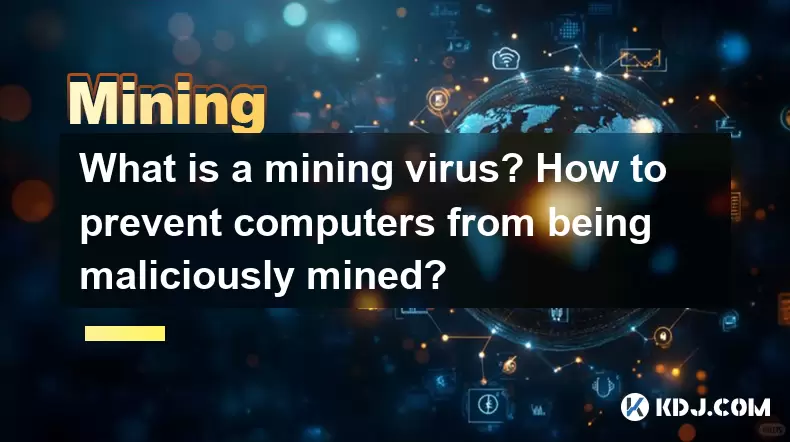-
 Bitcoin
Bitcoin $118100
-0.86% -
 Ethereum
Ethereum $3787
-1.64% -
 XRP
XRP $3.133
-2.92% -
 Tether USDt
Tether USDt $0.9999
-0.03% -
 BNB
BNB $833.2
-1.19% -
 Solana
Solana $183.5
-2.38% -
 USDC
USDC $0.9997
-0.01% -
 Dogecoin
Dogecoin $0.2266
-4.99% -
 TRON
TRON $0.3236
1.25% -
 Cardano
Cardano $0.7943
-3.74% -
 Hyperliquid
Hyperliquid $43.93
0.66% -
 Sui
Sui $3.951
-8.38% -
 Stellar
Stellar $0.4202
-4.58% -
 Chainlink
Chainlink $18.17
-4.24% -
 Bitcoin Cash
Bitcoin Cash $583.1
-1.67% -
 Hedera
Hedera $0.2696
-5.46% -
 Avalanche
Avalanche $24.99
-3.22% -
 Litecoin
Litecoin $109.3
-4.19% -
 UNUS SED LEO
UNUS SED LEO $8.973
0.13% -
 Toncoin
Toncoin $3.240
-4.14% -
 Shiba Inu
Shiba Inu $0.00001341
-4.15% -
 Ethena USDe
Ethena USDe $1.001
-0.03% -
 Uniswap
Uniswap $10.50
-3.00% -
 Polkadot
Polkadot $3.977
-5.08% -
 Monero
Monero $319.4
-1.05% -
 Dai
Dai $0.9998
0.00% -
 Bitget Token
Bitget Token $4.584
-2.51% -
 Pepe
Pepe $0.00001193
-5.58% -
 Cronos
Cronos $0.1395
-2.41% -
 Aave
Aave $289.6
-4.05%
What is a mining virus? How to prevent computers from being maliciously mined?
A mining virus uses your computer's resources to mine cryptocurrencies without consent, causing slowdowns and increased energy use; prevent it by updating software and using antivirus tools.
May 11, 2025 at 04:35 pm

What is a Mining Virus? How to Prevent Computers from Being Maliciously Mined?
A mining virus, also known as cryptojacking malware, is a type of malicious software that uses a victim's computer resources to mine cryptocurrencies without their consent. This form of cyberattack has become increasingly prevalent as the value of cryptocurrencies such as Bitcoin and Ethereum has risen. The virus covertly installs itself on a computer or network and uses the processing power to solve complex mathematical problems required to validate transactions and add them to the blockchain, earning the attacker cryptocurrency in the process.
How Mining Viruses Work
Mining viruses typically infiltrate a system through various means, including phishing emails, compromised websites, or software vulnerabilities. Once installed, they operate silently in the background, consuming CPU and GPU resources to mine cryptocurrency. The attacker benefits from the mined cryptocurrency, while the victim's computer may experience slowed performance, increased energy consumption, and potential hardware damage due to the constant strain.
Signs of a Mining Virus Infection
Detecting a mining virus can be challenging, but there are several signs that may indicate an infection. These include:
- Unusually high CPU or GPU usage when no intensive tasks are running.
- Increased electricity bills due to the extra power consumption.
- Slowdown of computer performance and longer load times for applications.
- Overheating of the computer due to the continuous high resource usage.
Preventing Mining Virus Infections
To protect your computer from being maliciously mined, several preventive measures can be taken. These include:
- Keeping software updated: Regularly update your operating system, browser, and other software to patch vulnerabilities that could be exploited by mining viruses.
- Using reputable antivirus software: Install and maintain up-to-date antivirus software that can detect and remove mining malware.
- Avoiding suspicious links and downloads: Be cautious when clicking on links or downloading files from unknown sources, as they may contain malware.
- Implementing strong passwords and two-factor authentication: Use strong, unique passwords for all accounts and enable two-factor authentication where available to prevent unauthorized access to your system.
Removing a Mining Virus
If you suspect your computer has been infected with a mining virus, follow these steps to remove it:
- Disconnect from the internet: Immediately disconnect your computer from the internet to prevent the virus from communicating with its command and control server.
- Enter safe mode: Restart your computer in safe mode to prevent the virus from loading at startup.
- Run a full system scan: Use your antivirus software to perform a thorough scan of your system and remove any detected threats.
- Check for browser extensions: Inspect your browser extensions and remove any suspicious ones that may be associated with the mining virus.
- Reset browser settings: Reset your browser settings to their default values to remove any malicious configurations.
- Manually delete suspicious files: If the antivirus scan does not remove all traces of the virus, manually search for and delete any suspicious files or folders.
Protecting Your Computer with Additional Measures
In addition to the basic preventive measures, you can take further steps to enhance your computer's security against mining viruses:
- Use ad-blockers: Install ad-blockers to prevent malicious ads that could lead to mining virus infections.
- Monitor network traffic: Use network monitoring tools to detect unusual outgoing traffic that may indicate a mining virus is communicating with its control server.
- Implement network segmentation: Segment your network to limit the spread of malware if one device is infected.
- Regularly back up data: Regularly back up your important data to ensure you can recover it in case of a severe infection.
Educating Yourself and Others
Educating yourself and others about the risks of mining viruses is crucial in preventing infections. Understand the common tactics used by attackers and share this knowledge with friends, family, and colleagues. Encourage them to adopt safe online practices and use reputable security software.
Frequently Asked Questions
Q: Can mining viruses infect mobile devices?
A: Yes, mining viruses can also target mobile devices, particularly those with powerful processors. It's important to keep your mobile operating system and apps updated and to be cautious when downloading apps from third-party sources.
Q: Is it possible to recover cryptocurrency mined by a virus?
A: Recovering cryptocurrency mined by a virus is extremely difficult, if not impossible. The mined cryptocurrency is typically transferred to the attacker's wallet immediately, making it untraceable and irretrievable.
Q: Can mining viruses spread through social media?
A: Yes, mining viruses can spread through social media via malicious links or compromised accounts. Be cautious when clicking on links shared on social media platforms and verify the authenticity of the source before interacting with any content.
Q: Are there legal consequences for using mining viruses?
A: Yes, using mining viruses is illegal and can result in severe legal consequences, including fines and imprisonment. It is considered a form of cybercrime and is prosecuted under various laws related to unauthorized access and theft.
Disclaimer:info@kdj.com
The information provided is not trading advice. kdj.com does not assume any responsibility for any investments made based on the information provided in this article. Cryptocurrencies are highly volatile and it is highly recommended that you invest with caution after thorough research!
If you believe that the content used on this website infringes your copyright, please contact us immediately (info@kdj.com) and we will delete it promptly.
- Avalanche (AVAX) Price Pump Incoming? Analysts Weigh In
- 2025-07-29 06:50:12
- Presales, Investment, July 2025: What's Hot and What's Not
- 2025-07-29 06:30:12
- PayPal, Bitcoin, and Merchants: A New Era of Commerce?
- 2025-07-29 07:10:13
- RUVI Token's Ripple Rally Potential: Audited AI Crypto Heats Up!
- 2025-07-29 04:50:12
- ADA Price, Cardano, SUI & Remittix: Decoding the Latest Crypto Moves
- 2025-07-29 04:50:12
- Solana, ARK Invest, and Staking: A New Era of Institutional Crypto?
- 2025-07-29 05:30:12
Related knowledge

What was the highest APY for IRON mining?
Jul 23,2025 at 05:14am
Understanding IRON Token and Its Mining MechanismThe IRON token is a stablecoin that operates within the Iron Finance ecosystem, primarily on blockcha...

What is impermanent loss in IRON pools?
Jul 23,2025 at 09:00am
Understanding Impermanent Loss in the Context of IRON PoolsImpermanent loss is a phenomenon that affects liquidity providers in decentralized finance ...

How to claim rewards from IRON mining?
Jul 23,2025 at 02:21pm
Understanding IRON Mining and Reward MechanismsIRON Finance operated as a decentralized finance (DeFi) protocol on the Polygon and Binance Smart Chain...

How to claim rewards from IRON mining?
Jul 29,2025 at 05:07am
Understanding IRON Mining and Reward MechanismIRON is a dual-token system designed to stabilize the value of a synthetic asset through a combination o...

IRON mining tutorial for beginners
Jul 27,2025 at 12:01am
What Is IRON and How Does It Work in the Cryptocurrency Ecosystem?IRON is a cryptocurrency token that operates on the Binance Smart Chain (BSC) and is...

How to calculate APY for IRON mining?
Jul 28,2025 at 09:49am
Understanding APY in the Context of IRON Token MiningWhen engaging in IRON token mining within decentralized finance (DeFi) platforms, Annual Percenta...

What was the highest APY for IRON mining?
Jul 23,2025 at 05:14am
Understanding IRON Token and Its Mining MechanismThe IRON token is a stablecoin that operates within the Iron Finance ecosystem, primarily on blockcha...

What is impermanent loss in IRON pools?
Jul 23,2025 at 09:00am
Understanding Impermanent Loss in the Context of IRON PoolsImpermanent loss is a phenomenon that affects liquidity providers in decentralized finance ...

How to claim rewards from IRON mining?
Jul 23,2025 at 02:21pm
Understanding IRON Mining and Reward MechanismsIRON Finance operated as a decentralized finance (DeFi) protocol on the Polygon and Binance Smart Chain...

How to claim rewards from IRON mining?
Jul 29,2025 at 05:07am
Understanding IRON Mining and Reward MechanismIRON is a dual-token system designed to stabilize the value of a synthetic asset through a combination o...

IRON mining tutorial for beginners
Jul 27,2025 at 12:01am
What Is IRON and How Does It Work in the Cryptocurrency Ecosystem?IRON is a cryptocurrency token that operates on the Binance Smart Chain (BSC) and is...

How to calculate APY for IRON mining?
Jul 28,2025 at 09:49am
Understanding APY in the Context of IRON Token MiningWhen engaging in IRON token mining within decentralized finance (DeFi) platforms, Annual Percenta...
See all articles

























































































